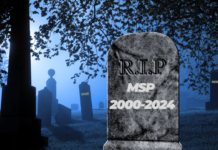The general sense of resignation that is pervading the country is real. I, like many others, wrote and spoke about it several times. Many of the channel leaders I speak with were a part of this phenomena. People must make the best decisions for themselves as they rethink work and what they do. What exactly is work? Why is this important? What is the balance? There are several questions to be answered…
Jay McBain has been hard at work at Forrester analyzing the data to see where the channel is headed. We conducted several interviews on the subject, and he spoke at several of our events. Jay’s understanding of the channel and its various moving parts is impressive. His ability to digest data and see outcomes is exceptional. Many of the numbers are difficult for me to recall.
We see a lot of what Jay talks about on the channel’s front lines. Data simply proves what is happening, so if you are observant, you will see what is happening on the ground. However, the channel has many more layers in various countries. While some channel principles are similar, many things differ from one country to another.
As Canadians, we share a large border with the United States, and it’s common for Americans to refer to Canada as the 51st state. Nothing could be further from the truth, but the old way of thinking persists. There are 10 provinces and 3 territories in Canada, and each one is unique. We also have two official languages, each with its own set of cultural differences. For example, we hold five ChannelNEXT events across Canada (a larger country than the United States), and we can tell you that the local attendees in each have different behaviours and needs. With only about 10% of the population of the United States, there is a lot of ground to cover to reach buyers. Canada is the world’s largest trade partner with the United States. We buy and sell a lot for a population of only 38 million people. We are the North, but did you know that roughly 70% of Canadians live south of the 47th parallel, which forms the border between Canada and the United States?
Smart vendors are aware of these subtle differences and adapt their channel strategies accordingly. In fact, we spend a significant amount of time assisting vendors in “localizing” their channel playbooks for Canada and other markets. Some people listen, while others don’t.
That is one of the things Jay may be able to improve upon at the new company. Expand the reach into other countries and assist vendors in determining the differences that separate channel success from failure. We’ve been doing some of this since we first expanded into Europe decades ago. Understanding the various go-to-market strategies for each country is critical. It’s the old adage, “Think globally, act locally.”
I recall the first time this became ingrained in my business DNA. I heard a long time ago about a car company that produced a vehicle called “NOVA,” but it was a flop in Mexico. They eventually realized that the word “NOVA” in Spanish means “Not Working.” Sometimes the market differences are obvious, but other times they are not, and it is critical for the leadership at vendors (or any company for that matter) to understand the complexities in order to be as successful as possible. Similarly, companies from outside North America must change their strategy in order to succeed here.
I’m excited to see what Jay and his new team bring to light as we continue on our journey to build the next generation of channel partner ecosystems. We will bring you periodic updates. All the best Jay!














